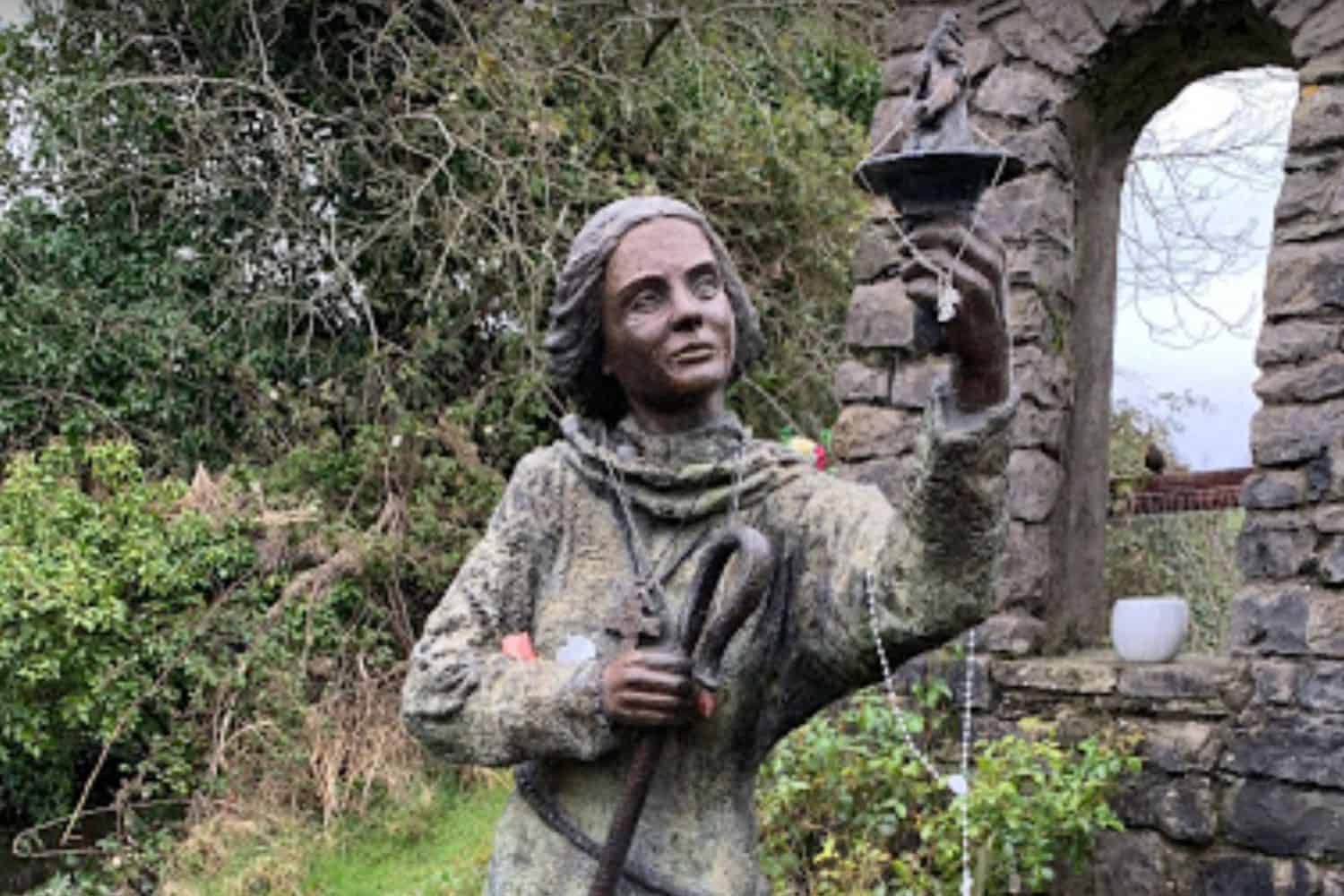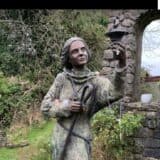Brigid: The Celtic Goddess of Fertility and Fire
The history of Brigid, the Celtic goddess turned saint.

As an Amazon Associate we earn from qualifying purchases. This post may contain affiliate links from Amazon and other sites that we collect a share of sales from. You may learn more here.
Brigid is the Celtic goddess of fire, fertility, poetry, healing, craftsmanship, and blacksmithing. Within the Celtic pantheon, the strong, independent, often red-headed goddess is also a war deity. She also symbolizes spring.
Her name changes depending on what country or language you’re speaking. She’s Brigit in Old Irish, Brighid in Irish, Brigantia in Celtic (where it means “high one”), Brigh in Scotland, and Bregit in Wales.

According to Courtney Weber, who wrote Brigid: History, Mystery, and Magick of the Celtic Goddess, her name also translates to “Exalted One” or ‘The Great Lady.” Though, one of her first names is found in Sanas Cormaic, an Irish glossary, where she’s known as Breo-Saighit, meaning “fire arrow.”
If you’re thinking her name sounds similar to the word brigade, you’d be correct. In Old Irish, the root brig means strength and in Proto-Celtic, it translates into might or power. All of which describe aspects of the goddess.
Pagans and neo-pagans honor the Goddess each year on February 1 or Imbolc, but the Catholic Church transformed her into the patron saint of Ireland in the Middle Ages. They honor her on St. Brigid’s Day, which falls on the same day.

Who Is Brigid Related To?
Brigid is the daughter of the Dagda, the patriarch of the Tuatha Dé Danann, Ireland’s pagan deities. Her mother is Morrigan, the Great Queen and war goddess renowned for her wisdom.
In the Cath Maige Tuired, two of the saga texts about Tuatha Dé Danann, Brigid is the wife of Bres, the high king of Ireland, and mother to their son Ruadán. When Ruadán dies after slaying the smith god Goibniu at the second battle of Magh Tuireadh, Brigid begins to wail and sing.
This combination is known as keening, a traditional form of grief expression in Ireland and Scotland.
In Oidheadh Chlainne Tuireann (The Tragic Story of the Children of Tuireann), she has three children with the God of Thunder, Tuireann. The three sons — Brian, Iuchar, and Ircharba — are mortally wounded by Miodhchaoin’s.
https://www.instagram.com/p/CamjidrNWeM/
Is Brigid a Triple Goddess?
According to Weber, Brigid is commonly portrayed as a triple goddess with three aspects, each named the same.
Weber writes, “Brigid has historically been considered a solar Deity and as three identical women of the same age, sometimes called the Three Brigid Sisters: Woman of Healing (Ban leighis), Woman of Smithwork (Ban goibnechtae), and Woman Poet (Ban fhile).”
https://www.instagram.com/p/CZrldZGL6GF/
What Does Brigid Look Like?
The depictions of Brigid are varied and mirror her many aspects. According to Weber, early statues of Brigantia, her English namesake, bear close resemblance to Roman images of Minerva.
In those statues, both Minvera and Brigid wear a helmet and brandish a spear. The difference is that Brigantia holds a jug of water to illustrate her deep connection to the rivers and streams venerated by the ancient Celts.
https://www.instagram.com/p/Cf3pj3dly4L/
In others depictions of Brigid, one side of her face is youthful, while the other is aged. This is reportedly because in Scottish lore, Brigid is interpreted as being both the embodiment of spring and winter.
At Glastonbury’s healing temples, she is embellished with sun-streaked hair bathed in light which may represent her connection to fire.
https://www.instagram.com/p/CZbx-mnM3xE/
How Can I Honor Brigid?
The most famous religious festival of Brigid is Imbolc, held on February 1st and 2nd.
Popular activities include lighting bonfires, making Brigid crosses or dolls, baking oatcakes and leaving them and milk out for her, and enjoying traditional foods like mulled wine, bannock, colcancnon, and dairy products like cheese. You could also place a representation of her on your altar.
https://www.instagram.com/p/CZcNKYlMcux/
Outside of Imbolc, the best way to praise Brigid is to light candles and leave coins and other offerings at her holy wells found throughout the British Isles. You could also visit her perpetual flame in Kildare.

In Celtic times, her 19 priestesses, known as the Daughters of the Flame, kept it burning. But, according to Rita Minehan in Rekindling the Flame: A Pilgrimage in the Footsteps of Brigid of Kildare, in the 16th century, the Norman church ordered the original flame to be extinguished in an effort to remove connections to its pagan roots.
Mary Teresa Cullen of the Brigidene Sisters relit the flame in 1993 and it still burns within the Solas Bhride.

